The Corsair RM1000x and RM1000i 1000W Power Supply Review
by E. Fylladitakis on September 30, 2015 8:00 AM EST- Posted in
- Cases/Cooling/PSUs
- Corsair
- RM Series
- Corsair Link
The Corsair RM1000i & RM1000x PSU - External Appearance
Physically, the RM1000i and RM1000x are nearly identical to each other. Their chassis is sprayed with a matte black color that is well applied and fingerprint-resistant. Further aesthetic improvements include chamfered side edges and side stickers with the model's number printed on them.
Another sticker can be found at the top of the chassis, with the electrical specifications of the unit. Both models are using the same 180mm long chassis. Note that this chassis is significantly longer than a standard ATX design (140mm) and may not fit into some designs, especially very compact layouts.
The front of the PSUs are littered with the numerous connectors for the modular cables. The number and type of connectors is identical, with the sole exception that the RM1000x lacks the Corsair Link interface connectors and the test button. There is a very basic legend printed beneath each group of connectors. Both the PCI-Express and the CPU 12V cables use the same connectors, the 6-pin connectors are for the SATA/Molex cables and the split 10+18 connector is for the 24-pin ATX cable.
The Corsair RM1000i & RM1000x PSU - Internal Design
The 135mm fan responsible for the cooling of the RM1000i and the RM1000x is a Corsair NR135P fan. As even the UL certification number points back to Corsair, this technically is Corsair's own unique product and not a re-branded fan, though it's a safe bet that ultimately some hereto-unknown Chinese factory still makes it for them. It has a FDB bearing and a maximum speed of about 1500 RPM. At this point we should note that both of the units feature a "zero-RPM fan mode", meaning that the fan will not start before the load is significant and component temperatures will require active cooling.
Both the RM1000i and the RM1000x are virtually identical on the inside as well, with the mere difference being the RM1000x lacking the circuitry related to the Corsair Link interface. The OEM behind their creation is Channel Well Technologies (CWT) and both units actually are an upgrade of the design that the RM1000 was based upon.

RM1000i (left) & RM1000x (right)
The first notable upgrade is the heatsinks. The heatsinks of the RM1000 were preposterously small for a PSU with that kind of output and rightfully Corsair thought that they would be a good place to start upgrading. Most of their focus was placed on the heatsink cooling the transistors at the primary side of the transformer, which is a huge upgrade over the small solid block of metal we saw in the original RM1000. The heatsink holding the APFC diode and transistors is still a solid block but it is a little longer.
The second upgrade is the sizing and the quality of the components. At the primary side, the APFC capacitors are still supplied by Nippon Chemi-Con but they are one 680μF and one 470μF capacitor, for a whopping total capacitance of 1150μF. The original RM1000 had two 390μF capacitors instead. Note that the capacitors of the RM1000i and the RM1000x may look physically different, but they actually are identical (KMR vs KMW series). Only their physical proportions differ and Corsair may be using either model depending on their availability. All of the secondary side capacitors, electrolytic and polymer alike, are now supplied by Nippon Chemi-Con as well, not TAICON and CapXon.
There are no sizable heatsinks at the secondary side of the transformer. The rectifying MOSFETs are being cooled by small metallic bars, some of which are being used as current distribution bars as well. Corsair is also using a lot of silicon glue throughout the unit, in an effort to enhance its mechanical cohesion. They seem to have placed a particular amount of effort to minimize electromagnetic vibration noise, or "coil whine", by placing a lot of glue on every inductor of the unit. They even wrapped the larger inductors with insulating material.
This vertical PCB is the only part that is notably different between the two units. Where the RM1000i has a microcontroller, the RM1000x is plain and shorted to follow only a core, pre-programmed thermal control set of instructions. The RM1000i's stock fan profile is identical but can be adjusted via the Corsair Link interface.


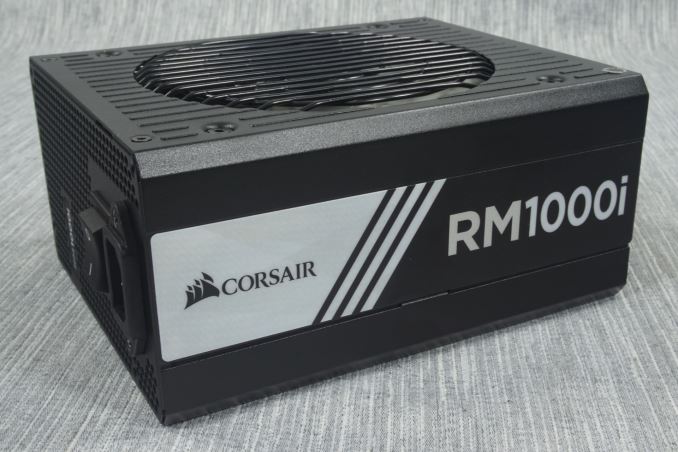
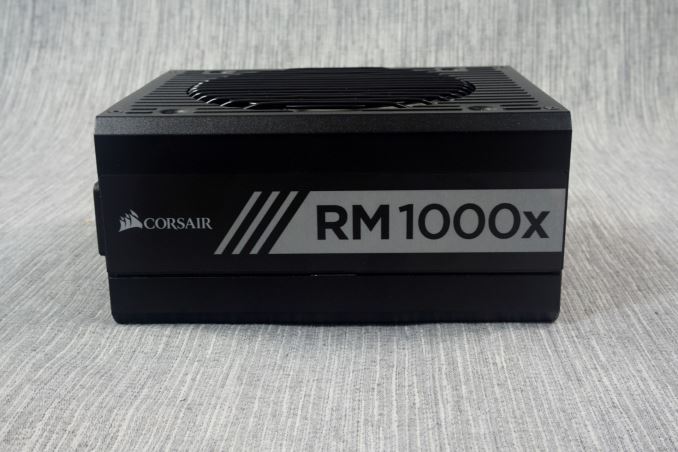
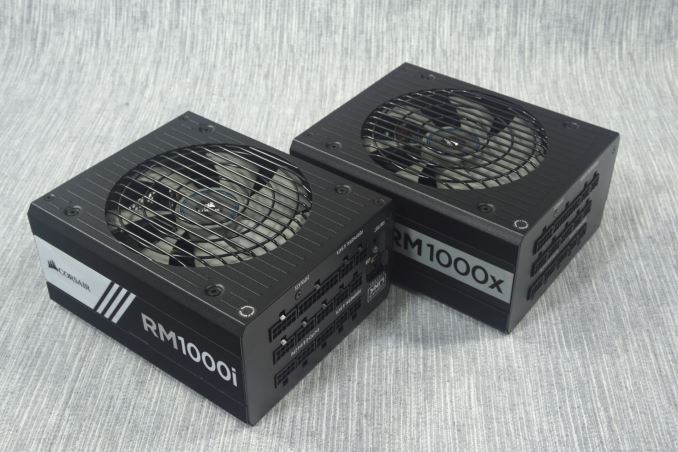
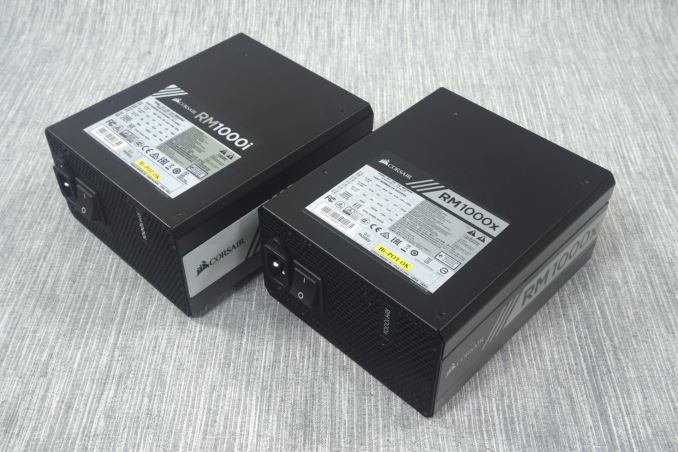
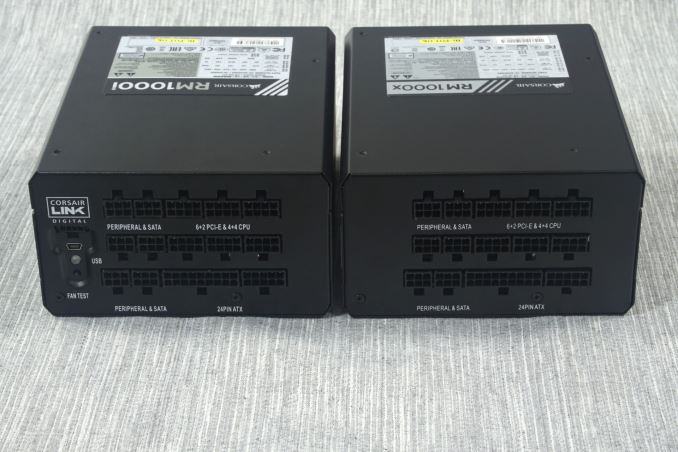
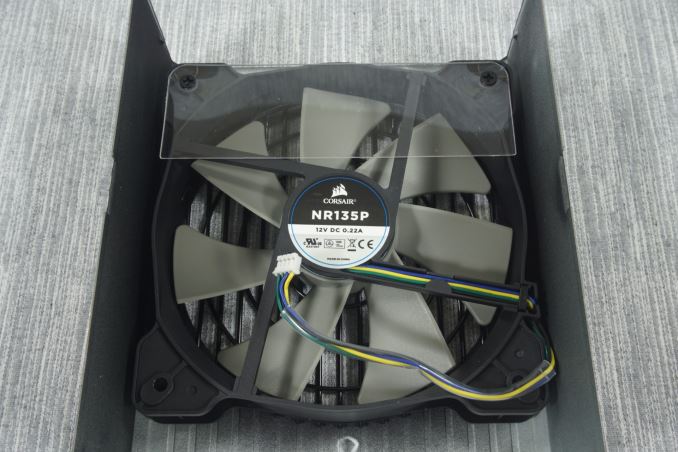






















47 Comments
View All Comments
jonnyGURU - Wednesday, September 30, 2015 - link
Actually... you have it backwards. Look at an old RM review and an old HXi review if you don't believe me. NR135L is the rifle bearing fan. NR135P is the FDB fan.E.Fyll - Wednesday, September 30, 2015 - link
True. That was a mistake on my part. The NR135P is the FDB fan.E.Fyll - Wednesday, September 30, 2015 - link
The NR135P is an FDB fan. The RM1000x is advertised as having a rifle bearing fan, but my sample also had a NR135P inside it (FDB).I would assume that what happened is the exact opposite of what you are suggesting - Corsair ran out of NR135L's at some point and, instead of switching to something inferior, they chose to install a superior fan inside some of their RM1000x's.
jonnyGURU - Wednesday, September 30, 2015 - link
Exactly.extide - Wednesday, September 30, 2015 - link
So we can all put this to bed!buxe2quec - Thursday, October 1, 2015 - link
Some clarification about fluid dynamic bearings, rifle bearings, ... http://www.hardwaresecrets.com/the-truth-about-flu... It's quite complete, and shows how the naming scheme is not always coherent.Cow86 - Thursday, October 1, 2015 - link
Hmm, interesting...So then that means that buying a RMx series PSU you normally get an inferior fan to this review. I guess it should still be possible to draw conclusions from reviews of the old RM series on the fan's performance then though. Shame anyway, it robs us of a good direct comparison here. Thanks for the follow-up jonnyGURU!ruthan - Wednesday, September 30, 2015 - link
Are sure that fan will not spinning until 500W load, even in longer load period? Because of i have Seasonic semi passivelly cooled PSU and fan not spinning worked only on paper, there was some temperature trigger set prettty low, so fan was spinning even in 150W,200W load after few minutes regardless of fan mode switch (PSU was Platinum 860W).jonnyGURU - Wednesday, September 30, 2015 - link
The fan uses an algorithm of load, temperature and duration. Similar to the Seasonic. The marketing represents the fan speed at different loads at 25°C. If your ambient temperatures are higher, the fan will start sooner.Cellar Door - Thursday, October 1, 2015 - link
Seasonic has been doing smaller footprint PSUs for a while with a 'fan only when needed' switch for a while now. For ex. a 750 Gold unit would top out at 975watts and do stay in platinum efficiency for most of the time.Why are we getting all excited about a bearing technology 3 years after superior units jonnyGURU?
XFX units(based on them), were a steal..